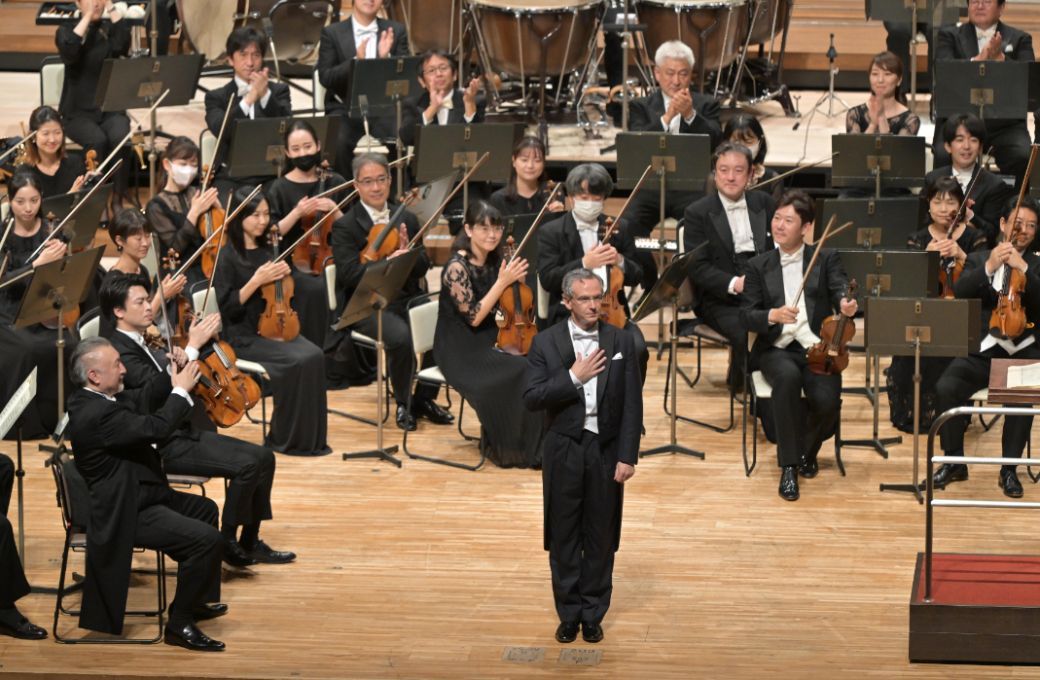I wonder what reasons Fabio Luisi had when he chose to programme Verdi’s Messa da Requiem for his inauguration concert with the NHK Symphony Orchestra, Tokyo. Was it to mourn the victims of the pandemic (although it may have been a pre-pandemic decision)? Or was it because the concert fell on 9/11? Or was it for purely artistic reasons? He certainly could not have anticipated the death of the British monarch, or the Russian aggression in Ukraine. Whatever the reason, it became an apt and poignant choice for our times, and his soulful interpretation suited the current mood.
The concert also marked the orchestra’s return to their long-standing home, the NHK Hall, which had been under refurbishment for 16 months. It doesn’t have the opulent acoustics of Suntory Hall or Muza Kawasaki, yet the sound of the NHKSO is so strongly associated with the hall that the orchestra sounded settled and familiar, even under their new chief conductor.
The performance as a whole was immaculate – orchestra, chorus, soloists – there was no weak link. The orchestral forces were back to their pre-pandemic size, although the chorus (the meticulously drilled New National Theatre Chorus led by chorus master Kyohei Tomihira) was still smaller than usual with 80+ singers. Furthermore, Luisi had assembled an impressive line-up of international soloists including two Russians: soprano Hibla Gerzmava, mezzo Olesya Petrova, lyric tenor René Barbera (who entertained us in NNTT’s Cenerentola last year) and renowned Wagnerian bass Kwangchul Youn.
It was no surprise that Luisi’s approach to Verdi was an operatic one, more specifically lirico rather than dramatico. It was a tightly controlled and beautifully paced performance (if a little on the slow side), and he maintained the tension throughout. Within that, though, he gave the singers enough space to bring out the melodic lines and express the text – here we saw the opera conductor side of him. The four soloists worked wonderfully well as a team, listening to each other carefully, and they got through the tricky a cappella moments with good intonation and harmony. Luisi’s music-making was generally straightforward, focusing on the precision of the ensemble and not moving around the tempo too much. His emotional emphasis seemed to be on compassion and meditation, with the fury and menace toned down, and no room for sentimentality. The orchestra responded with fine and committed playing for its new chief.
Luisi drew us into the sombre and reflective Requiem aeternam and Kyrie sections with delicately sotto voce chorus producing a luminous, transparent sound. The multi-section Dies irae was well thought out and meticulously executed. The contrast between the punchy “Dies irae, dies illa” and the almost whispering of the lines “Quantus remor” of the chorus, Youn’s moving solo in Mors stupebit reminiscent of a scene in a Verdi opera, and Barbera’s clarion tenor soaring over the orchestra in the Ingemisco were some of the memorable moments.

After the Dies irae, the performance seemed to go by in a flash. The short and sweet Sanctus featured some wonderfully delicate and precise playing from the violins and winds, followed seamlessly by the penitent duet of the Agnus Dei. In both the Agnus Dei and Lux aeterna, Petrova’s warm and sonorous mezzo stood out, and Gerzmava’s dignified yet emotional Libera me brought the work to a sombre close.
Musically, it was an outstanding performance, and certainly the most immaculate of all the Verdi Requiems I’ve heard. My one slight reservation was that sometimes I missed the raw emotionality of this music amidst the perfection. But it’s still early days of this new partnership, and I’m sure it will develop and enable bolder music-making in the coming years.


